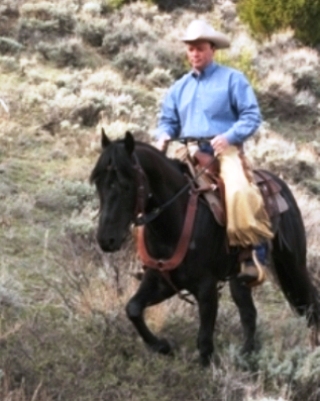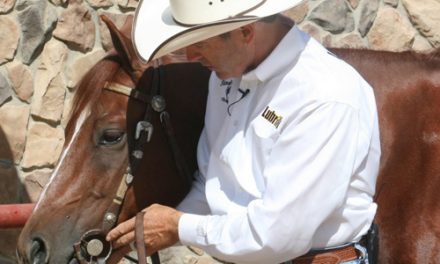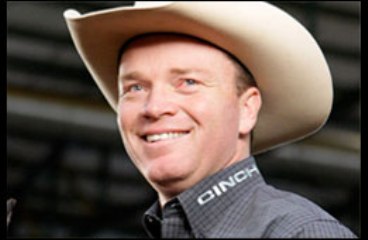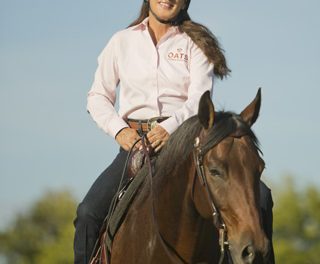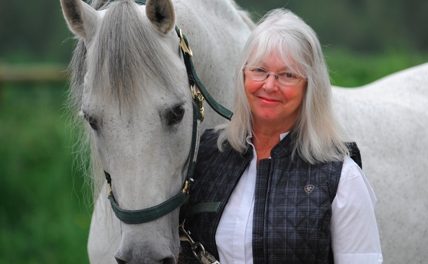 Whether you compete in trail classes or not, trail obstacle courses are a great way to get your horse used to a lot of things and have fun. In this month’s article, I will review nine common trail obstacles and how I like to see them approached when I am judging a trail class. These are my personal opinions on how I like to see things done. Each judge has a slightly different view on things.
Whether you compete in trail classes or not, trail obstacle courses are a great way to get your horse used to a lot of things and have fun. In this month’s article, I will review nine common trail obstacles and how I like to see them approached when I am judging a trail class. These are my personal opinions on how I like to see things done. Each judge has a slightly different view on things.
1. Logs.
This usually consists of multiple logs, one after the other. Your horse is supposed to step over the logs calmly and quietly. I like to see a horse hesitate slightly before each log to show he is paying attention and is aware that there is something in front of him. He should step over each log willingly and carefully, staying flexed in the poll the entire time. I don’t like to see a horse rushing over the logs or jumping them. I also don’t like to see a horse walking over the logs with his nose stuck out and braced against the bridle.
2. Back-up box.
This obstacle is a rectangular box that is open on one of the narrow ends. Your goal is to walk your horse in to the box, stop, and back him out, all without stepping out of the box or hitting the sides. I like to see a horse stay soft and flexed in the poll throughout the exercise. I like to see a rider who sits up straight and tall, looking ahead. I don’t like to see a rider who looks down and back as his or her horse is backs up. This throws the horse off balance and makes him more likely to step out of the box, and it makes the rider seem less confident in their horse. I also don’t like to see a horse step out of the far end of the box before halting and backing up. The horse should back up smoothly, without the rider pulling or jerking on the reins.
3. The bridge.
This can be over water but is frequently over dry ground. Your horse should step calmly on to the bridge, take his time walking over, and step off calmly and quietly. I don’t like to see a horse stepping off the side of the bridge or rushing to get on and off the bridge. Be sure not to look off your horse’s side to see where the bridge is under you, as that will throw your horse off balance and can cause him to step off the side. I also don’t like to see a rider kick the horse at the last minute when he is just stepping on to the bridge. That tells me that the rider is not sure if the horse is going to quit, and it tends to make the horse rush on to the bridge.
4. Large tire full of fine gravel.
This duplicates a spot in the trail where your horse needs to step up on to something. As with the logs, I like to see a horse hesitate slightly before stepping up on to the tire. That lets me know he is aware of what he is doing. You should halt your horse with all four feet on top of the tire, then ask him to step down. He should do all this calmly and quietly. I don’t like to see a horse charge up to the tire, rush over the top, and step down without halting. The halt on top of the tire shows me, as a judge, that the rider has complete control of the horse.
5. Side pass poles.
This is just a pole on the ground, and your horse needs to side pass the length of it down and back. I want to see a horse side pass calmly and correctly, with his body even and square. He should be flexed in the poll, and his legs should be crossing over as he moves sideways, not just moving over to meet each other. The rider should be sitting straight and confidently in the saddle.
6. The compass.
This is a pole or a two-by-four, about 12 feet long, with a loop of rope through one end that can be used as a handle. Both ends of the pole should be sitting on barrels. Your job is to ride up to one end of the pole, pick it up by the handle, and ride your horse in an even circle so that the other end of the pole stays on the second barrel. You ride a complete circle, and set the pole back on the barrel where you picked it up in the first place. I like to see the horse maintain a nice even arc throughout the entire circle. He should also maintain an even speed. The other end of the pole should not move on the barrel. The rider should sit straight, without leaning in, and should not drop his or her end of the pole or pull the opposite end of the pole off the barrel.
7. The tire drag.
You take a rope with a tire attached, dally (wrap) the rope around your saddle horn, and drag the tire to a set location. I look for a rider to dally the rope correctly, with the thumb up and holding the hand correctly near the belt buckle. In my opinion, the rider should keep an eye on the object that is being dragged. When you go to leave the drag at the drop location, coil the rope neatly and hang it on the designated hook. Before leaving the drag, I like the rider to stop his or her horse, face the tire, and back up a few steps. This shows me that the horse is aware of the object he is dragging. You will lose points if you drop the rope or your horse is afraid of the dragging object.
8. The rain coat.
I like to see the rider brush the coat over the horse’s neck and hind end. The horse should not be afraid of the rain coat. It is very important to me that the rider NOT drop both reins and swing the rain coat over his or her head to put it on. Doing it this way is a huge safety hazard. If your horse spooked, bolted, or bucked when both your arms were halfway in to the coat above your head, you would have no way of stopping him. The rider should take the reins on one hand, put the other arm though the coat, then switch the reins to the other hand and put that arm in to the coat. Repeat this process when taking the coat off.
9. The gate.
It is very important that you keep a hand on the gate from the time you open it to the time you close it. There are two ways of opening the gate. You can either push the gate away from you, ride through it, and back your horse up to shut it. Or you can pull the gate towards you, ride through, and side pass to close it. Either way is acceptable. I suggest you pick the way that your horse seems more comfortable with and stick with that. Your horse should be quiet through this entire process, and he should not be afraid of the gate.
About the author
Ken McNabb grew up on a cattle ranch and is a life-long horseman, as well as a popular trainer and clinician, whose methods are based on his work with John Lyons and his own experiences with horses. Ken is known as being a master communicator who helps both horse and rider become the best they can be. Ken is regularly featured on RFD-TV. Visit Ken’s website at www.kenmcnabb.com.

